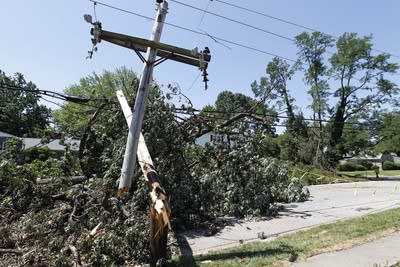Unreliable grid puts Americans' power supply at risk

Even as Americans pay more for power, they are suffering increasingly serious blackouts and power outages,according to a recent Associated Press report.
"Neither the spending nor the reliability trends are dramatic on their own," the report says."But experts say the combination is revealing: it suggests that the extra money from electric customers isn't being spent wisely, or that utilities aren't investing nearly enough to upgrade fragile equipment that is increasingly threatened by major storms."
Superstorm Sandy revealed the vulnerability of the power grid when it left more than 8 million people without electricity last fall.
In a move to help modernize the system, federal stimulus money has been used to transfer more of the country's power to a "smart grid" system. "Before stimulus funds began flowing in 2009, there were only a few hundred smart-grid sensors, which help pinpoint exactly where a problem has occurred," reports NPR. "With the government kicking in about 45 percent of the cost of these sensors and private utilities paying the rest, there should be 1,000 in place before the end of [2013]."
Create a More Connected Minnesota
MPR News is your trusted resource for the news you need. With your support, MPR News brings accessible, courageous journalism and authentic conversation to everyone - free of paywalls and barriers. Your gift makes a difference.
Massoud Amin, professor of electrical and computer engineering and director of the Technological Leadership Institute at the University of Minnesota, and Michael Noble, executive director of Fresh Energy, join The Daily Circuit to discuss how to protect and improve the United States' power grid.
LEARN MORE ABOUT THE POWER GRID:
• Superstorm shines a light on power grid vulnerabilities
"Reed says because big, damaging weather events seem to be occurring more frequently, we may be heading into an era of "more activity and more significant impacts." Power lines are susceptible to strong winds and storm-tossed branches, and high waves can submerge substations and other critical equipment." (NPR News)
• Visualizing the U.S. electric grid
This map from NPR shows the entire U.S. power grid, where our power plants are and what kind of power we're using.
• Girding Minnesota's electric grid
"Minnesota has more than 8,500 miles of high voltage lines crisscrossing the state. Burying those lines would cost between $25 billion and $85 billion." (Finance & Commerce)
• Thousands could die if U.S. power grid attacked
"A terrorist attack on the U.S. power grid could be more destructive than superstorm Sandy, possibly costing hundreds of billions of dollars and leading to thousands of deaths, the National Academy of Sciences said." (Bloomberg Businessweek)
• First phase of power grid upgrade goes online
"The new power lines are part of the CapX2020 project and provide great reliability for the St. Cloud region, said Tim Carlsgaard, a spokesperson for the project. CapX2020 is the first major update to the region's transmission grid since the 1970s." (MPR News)
